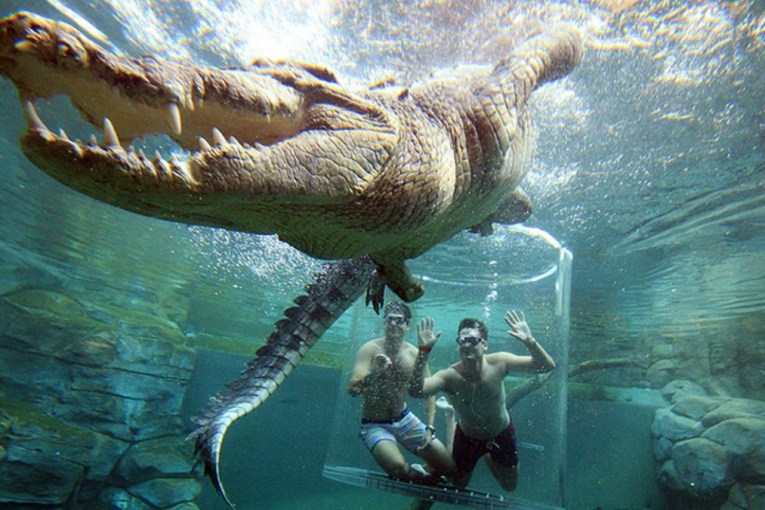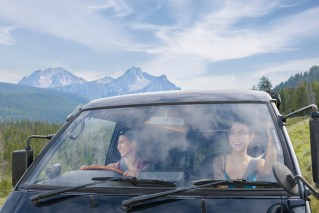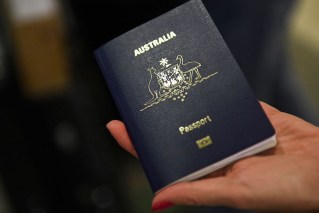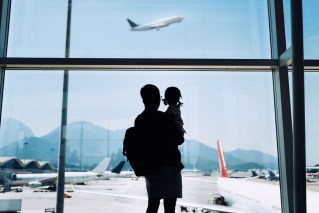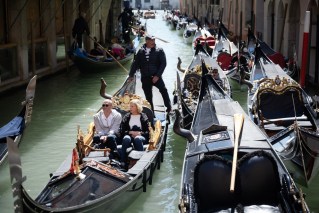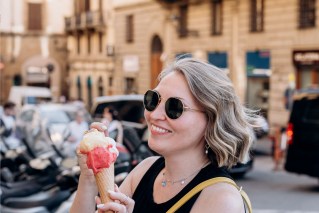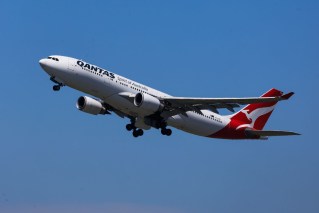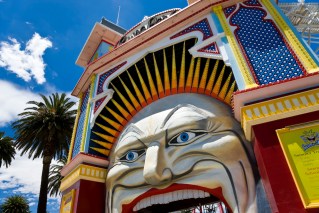Five fab things about Hobart that have nothing to do with MONA
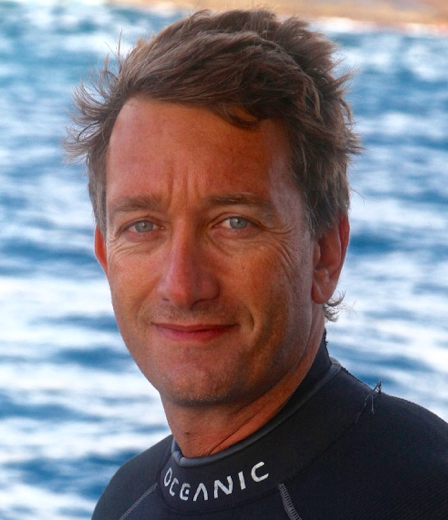
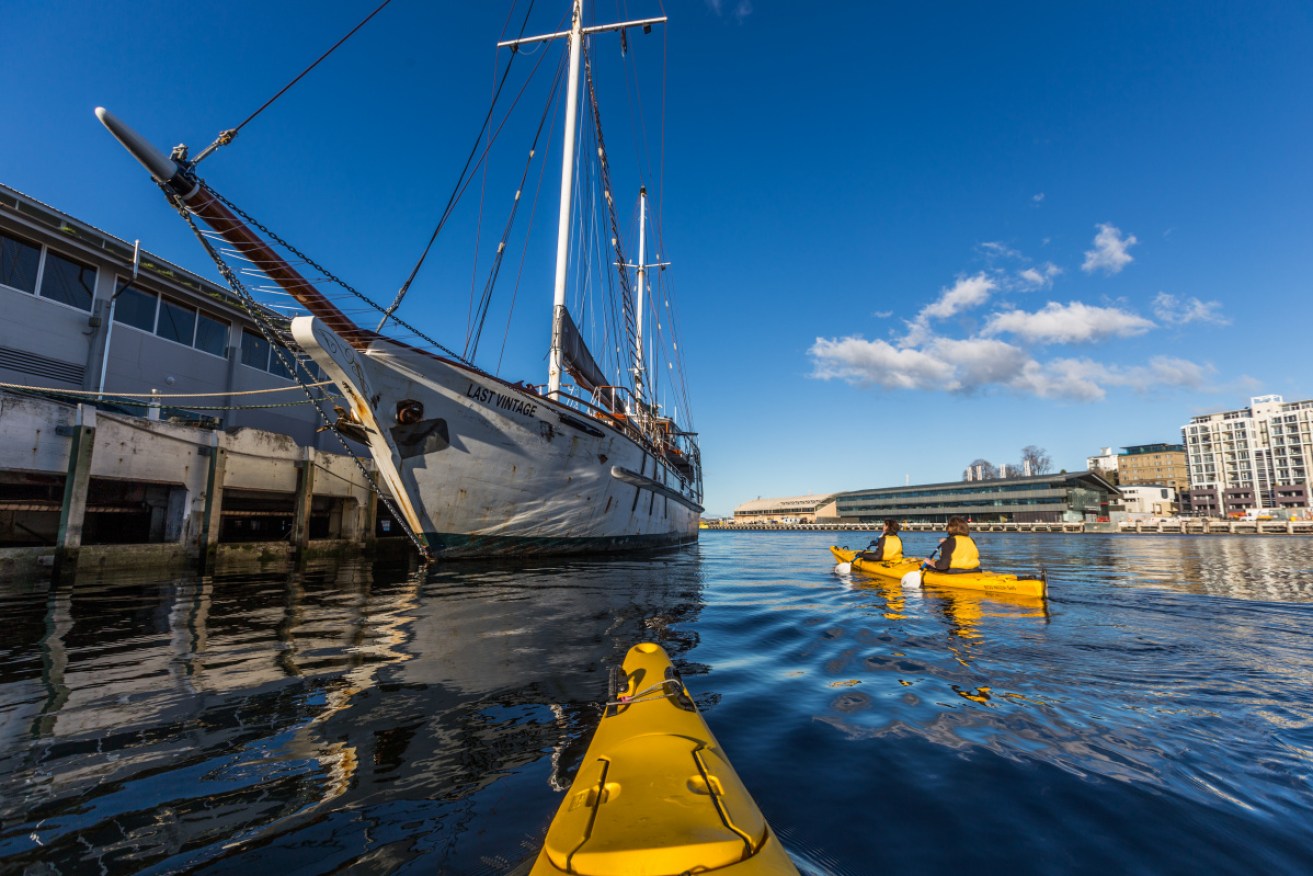
Roaring 40s' city tour offers an on-water view of Hobart. Photo: Matt Glastonbury
Before MONA (Museum of Old and New Art) opened in 2011, travel publications weren’t very interested in stories on Hobart.
Today, they aren’t that interested in stories about Hobart that aren’t about MONA and its bizarre collection of art. Yes, the museum is fantastic, but there’s more to Hobart than a concrete bunker crammed with plaster vaginas and an installation piece with its own digestive system.
Surrounded on all sides by river and ocean, pinpointed by mountains and home to Australia’s largest collection of colonial sandstone buildings, Hobart on a sunny day is so picture-perfect it brings new meaning to #nofilter.
As a taster, here are five seriously Instagrammable parts of Hobart and surrounds that have absolutely nothing to do with MONA – and five interesting ways to take them in.

A unique perspective of Australia’s southern-most capital city.
1. Kayaking @ Hobart Harbour
As the only kayaking company in Southwest National Park, a 6000-square-kilometre expanse of raging rivers, snow-capped mountains, marshlands and moors in the most remote corner of Tasmania, Roaring 40s doesn’t just take anyone on its expeditions.
Applicants must be fit and “confident enough to survive in the wilderness in a long-term situation”, says one guide.
But anyone can join Roaring 40s’ daily Hobart city tour, which kicks off at 10am from a little beach in the well-heeled harbour-front suburb of Sandy Bay.
After a quick lesson, kayakers launch their craft into water that is still as a lagoon. They follow their guide along a craggy coastline, where an industrial-chic masterpiece that featured on Grand Designs and other multimillion-dollar homes hang on steep precipices.
After passing the CSIRO Marine and Atmospheric Research Centre at Battery Point, kayakers turn a corner and find themselves smack in the middle of a busy port, churning with 10-storey-tall cruise ships and wooden sailing ships.
At Constitution Dock, kayakers tether together on a buoy while the guide paddles ashore and returns with brunch: piping hot fish and chips from one of Hobart’s floating fish punts.
How much: $90 ($60 for kids)
Find out more: roaring40skayaking.com.au

Combine a walking tour of Hobart with stories of its history. Photo: Adam Gibson
2. Storytelling @ Sullivans Cove
“In 1802, when a French scientific expedition that’d sailed to Tasmania stopped by Sydney on the way back to Europe, the crew were invited to dine with the governor. After a few cups of wine, the French let it slip they were thinking about establishing a settlement in Tasmania. You can almost hear the British thinking ‘We better get down there quick!’. So they got a ship together and sent it down with Captain John Bowen, who established Tasmania’s first European settlement at Risdon Cove.”
This is just one of many fascinating stories behind Hidden Hobart: Senses and Seen, a storytelling tour by MACq 01, a slick new design hotel in Hobart’s historic Sullivans Cove district.
The two-hour walk-and-talk takes in architectural icons such as Constitution Dock, Parliament House, old Hobart gaol and the Henry Jones IXL jam factory.
According to one storyteller, the factory was named after a poor kid who quit school at age 12 to stick labels on jars. By the time he turned 30, he owned the factory and, by the time he died, Jones was the richest man in Tasmania.
“After he bought the jam factory, he renamed it IXL. It’s an abbreviation for his personal motto: I excel, as in ‘I excel’ in everything I do,” says our guide.
How much: $20 (free for hotel guests)
Find out more: macq01.com.au/experiences

Fill up on delicious treats that you won’t find anywhere else. Photo: Amy Brown
3. Street food @ Franklin Square
With water fountains, a marble statue and giant chess board, Franklin Square is a pleasant enough place during the day. It’s less so on brisk Tassie nights, unless it’s a Friday – when the square lights up for Street Eats @ Franco, a street food market with live music, beer and wine.
“Our stall holders all prioritise Tassie produce. The guy who sells the oysters – he farms them and shucks them himself,” food curator Maddy Delany says. “We also ask them to create an entirely new menu for us so the food they sell here you won’t find anywhere else.
“For example, we have a stall holder who does homemade ice-cream, but here he makes ‘sourdough’ ice-cream sandwiches. We also have a new stall holder from Taiwan doing these things called ‘squidly pops’ you’ll see everyone here walking around with – big skewers of barbecued squid marinated in satay sauce with sesame.”
Street Eats @ Franco runs from November to April. If you’ve missed it this year, you can find many of the same stall holders, plus fresh Tasmanian produce, on any given Sunday at the Farm Gate Market on nearby Bathurst Street.
How much: Eats from $8
Find out more: streeteatsfranko.com.au or farmgatemarket.com.au

Believe it or not, this is an airport hotel, Tassie style.
4. An eco resort @ the airport
Wake up in the morning, grab a bicycle from reception and go for a ride along the dunes at Seven Mile Beach. Or walk over to Sandy Point to see yachts and fishing boats cruise out to sea and peer across to the Spectacle Islands – a sanctuary for little penguins.
At low tide, you can walk around the point and along the sand flats at nearby Five Mile Beach, where – if you’re lucky – you’ll spot a dolphin, though you’re guaranteed to spot a wallaby before returning to base.
No, you’re not at an eco-resort in a remote corner of Tasmania. You’re at the Ramada Resort by Wyndham at Seven Mile Beach, the most un-airport-like airport hotel in Australia.
Only a three-minute drive from the domestic terminal or 25 minutes from the city, the Ramada Resort is arranged like a little suburb, with a reception and pool area in the centre and private lanes leading to 30-odd freestanding units. Inside, they feel more like homes than a hotel, with separate bedrooms, full-size kitchens and private patios with barbecues, sun beds and, why not?, a hot tub.
It’s a lovely place to begin or end a Tasmanian journey … but in a spot lovely enough to warrant lingering longer.
How much: One-bedroom from $165, two-bedroom units from $200 a night
More info: wyndhamhotels.com

Fine white sand and turquoise water – this is Cockle Creek beach. Photo: Getty
5. Road trip @ the far south
There are so many drop-dead gorgeous road trips around Hobart it’s hard to play favourites. But the 320-kilometre round trip down the Huon Highway to Cockle Creek, the farthest point south one can drive in Australia, is hard to beat.
From Huonville, the vista expands like the opening scene of a Western movie, with wide, sweeping valleys, mountains poking in and out of clouds, forests, apple orchards and the magnificent Huon River. The road winds along its bank like a snake, past picturesque fishing villages such as Port Huon and Dover, with their bakeries, boutique wineries and local seafood haunts.
From Surges Bay, detour onto the coastal route to see Tasmania’s most unexpected site: beaches with the kind of fine white sand and, if the sun’s out, turquoise blue water you expect to find only in the tropics. The last 20 kilometres of the road is dirt – don’t try it in bad weather.
Park at Cockle Creek. Have lunch on a secluded beach with crystal-clear water clear as glass. If you’re game, an epic two-hour-long coastal walk leads to the windswept cliffs of South Cape Bay, the most southerly point of Australia.
How much: Rent a car from $60 a day
Find out more: Tasmania.com/itineraries
